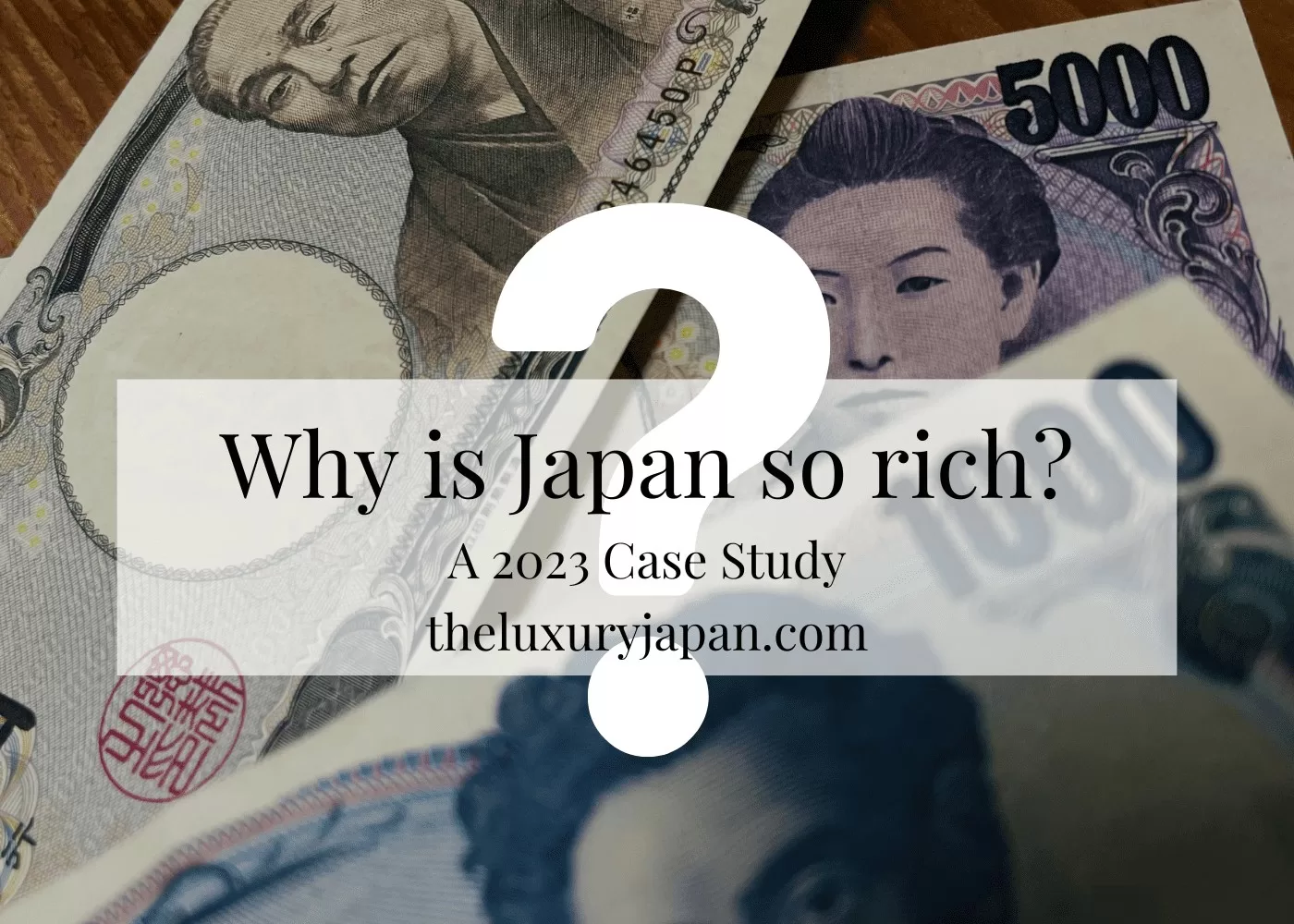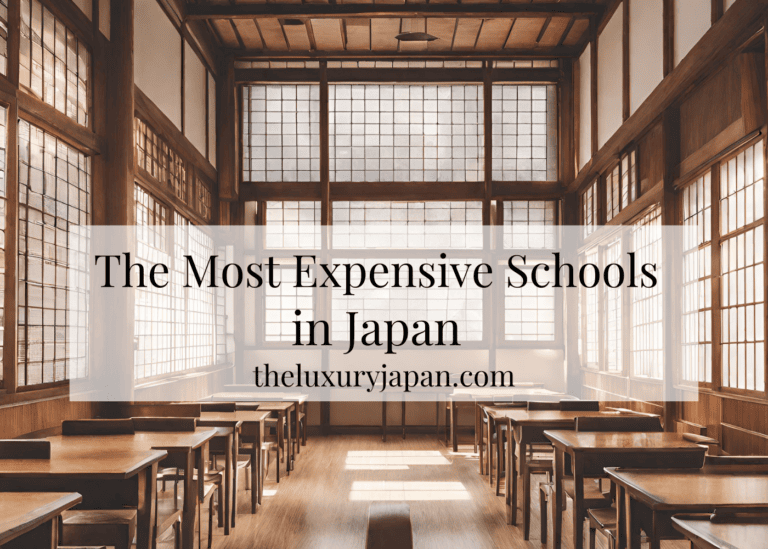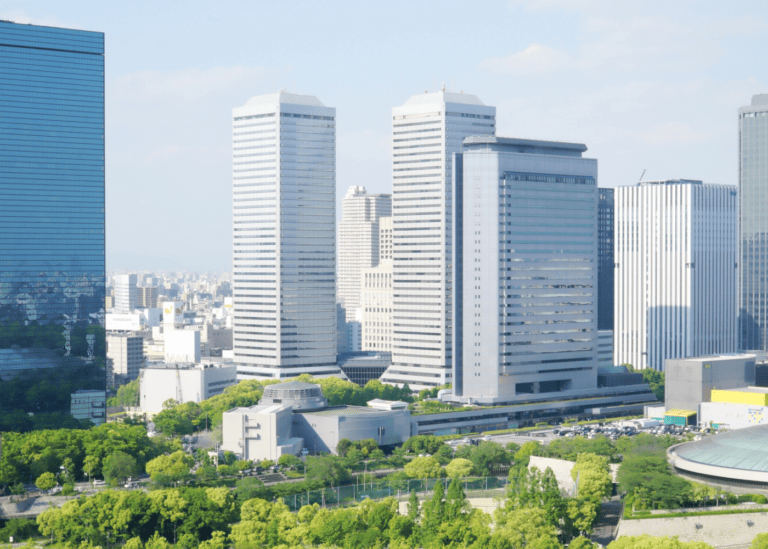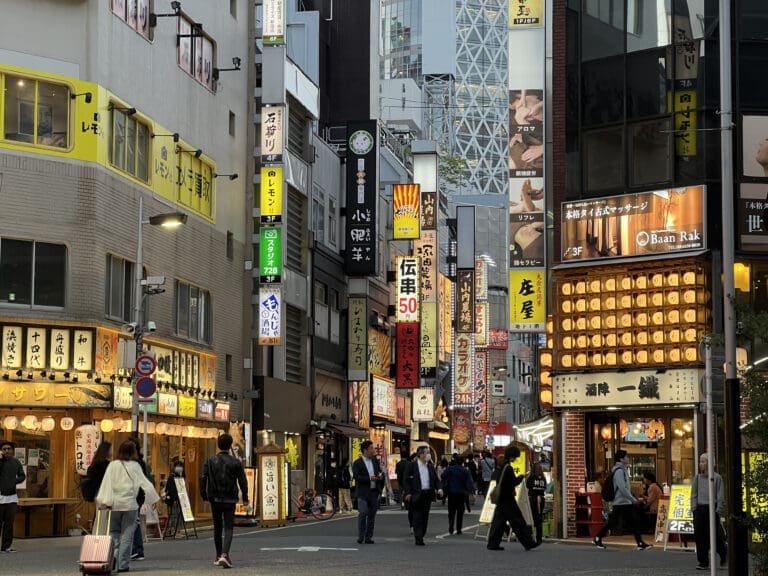Why is Japan So Rich? A Deep Dive on Japanese Economy in 2023
Have you ever wonder how and why is Japan so rich? When we cast our eyes across the global economic landscape, the dominance of Japan stands out distinctly. The heart of this economic prowess pulses through global brands, cultural exports, and an indomitable spirit of innovation.
In this article we will delve into the factors that contribute to Japan’s unparalleled economic success.
1. The Strength of Japanese Corporations: Titans of Global Industry
The very fabric of the global market is interwoven with the thread of Japanese brands. From the rev of a Toyota or Honda engine to the precise capture of a Nikon camera, from the thrilling stories of anime and manga to the luxury embodied by Lexus – Japan’s corporate giants echo the country’s commitment to innovation, quality, and global outreach.
Market Capitalization of Japanese brands, as of September 1, 2023 – data from companiesmarketcap.com
- Toyota: $232.92 B
- Sony: $102.80 B
- Keyence: $101.74 B
- NTT (Nippon Telegraph & Telephone): $99.89 B
- Mitsubishi UFJ Financial: $95.33 B
- Fast Retailing (Uniqlo): $71.05 B
- Mitsubishi Corporation: $70.88 B
- Tokyo Electron: $69.50 B
- SoftBank: $66.12 B
- Shin-Etsu Chemical: $65.11 B
In fact, in Ginza, Tokyo’s Luxury District, brands like Lexus have an impressive presence. Even the latest innovations from brands like Sony and Panasonic become a part of an upscale lifestyle that are very visible in this district. And when we talk about fashion and style, Tokyo’s trendiest neighborhood, Nakameguro, is a testament to the influence of brands like Uniqlo.
These Japanese brands haven’t merely captured market shares; they’ve won hearts, set standards, and defined industries.
Here’s a glimpse of Japan’s iconic brands and their respective categories:
- Automobiles
- Toyota
- Honda
- Nissan
- Lexus
- Subaru
- Mazda
- Mitsubishi
- Electronics & Cameras
- Sony (Electronics & Entertainment)
- Panasonic (Electronics)
- Nikon (Cameras)
- Canon (Cameras)
- Casio (Electronics & Watches)
- Fujifilm (Cameras & Film)
- Anime & Manga
- Studio Ghibli (Film & Animation)
- Toei Animation (Animation Production)
- Shueisha (Publishing – Manga Magazines like Shonen Jump)
- Fashion & Apparel
- Uniqlo (Casual Wear)
- Issey Miyake (Fashion Designer)
- Video Games & Consoles
- Nintendo (Consoles & Games)
- Capcom (Games)
- Konami (Games)
- Bandai Namco (Games & Toys)
- Miscellaneous
- Yamaha (Musical Instruments & Motorcycles)
- Hitachi (Diverse industries from Electronics to Construction)
- TOTO (Sanitary equipment, especially high-tech toilets)
2. A Historical Perspective: Building on Strong Foundations
The story of Japan’s economic ascent is intricately tied to the transformative period known as the “Japanese Economic Miracle.” It’s essential to appreciate the landscape of this nation’s staggering economic transformation in the post-World War II years to understand its current success.
In fact, if you have been to Japan, even a brief visit to Tokyo’s luxury district, Ginza, or a stroll through the trendy neighborhoods of Nakameguro and Daikanyama, reveals how deeply embedded these values are in every facet of Japanese life.
The Landscape Post World War II
The close of World War II left Japan battered and bruised, with its cities bombed out and economy in tatters. But from these ruins rose an economic giant, fuelled by determination, strategic reforms, and international partnerships.
This post-World War II era (1950s-1990s) was marked by unprecedented economic growth, as detailed by the Berkeley Economic Review. It was during this period that Japan underwent land reforms, democratizing ownership. The government, realizing the transformative power of education, also invested heavily in creating a literate, skilled workforce.
Japan’s Economic Growth Trajectory after WWII:
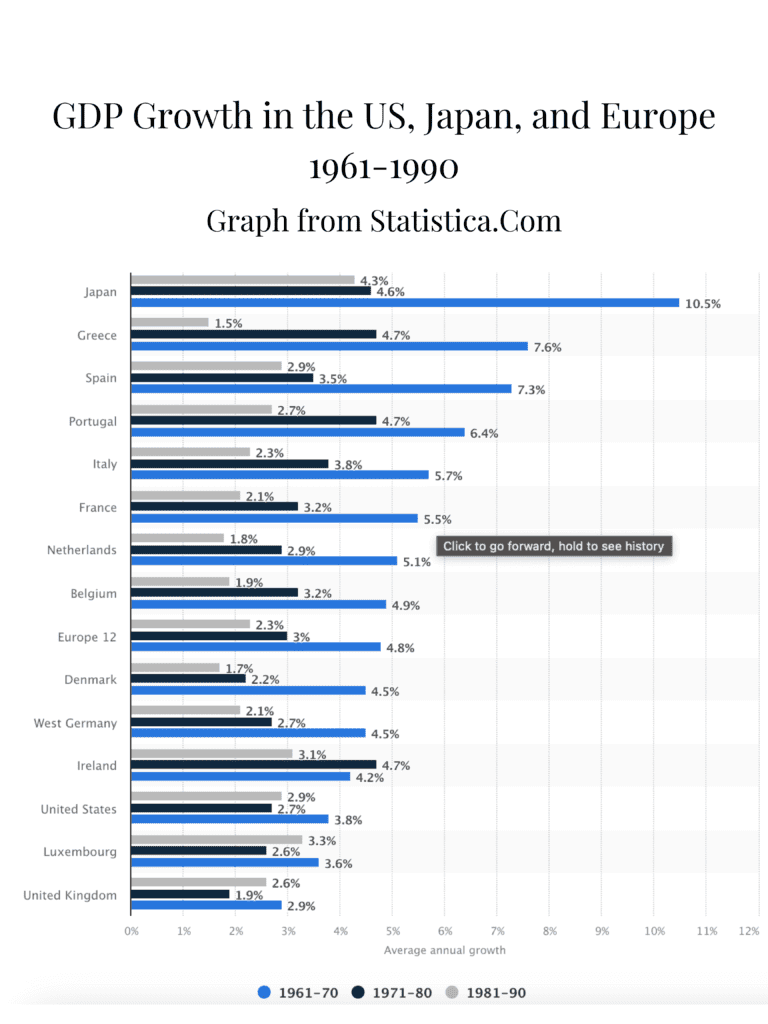
- Immediate Post-War Recovery (1945-1950): This period was marked by initial recovery efforts, supported heavily by the US through the Marshall Plan and other economic aid initiatives.
- Rapid Economic Growth Period (1950s-1973): Japan’s GDP experienced a remarkable annual growth rate of over 10% for most of this period. Particularly notable was the year 1960, where Japan reported a whopping 17.3% GDP growth.Key industries such as steel, automobile, and electronics began their ascendancy. Japan also benefitted from special procurements arising from the Korean War, which provided a short-term economic boost.
- Stable Growth Period (1974-1991): Following the oil shocks of the 1970s, Japan’s growth rate moderated to an average of around 4%. Yet, even in this period, the economy was resilient. The emphasis shifted towards high-tech industries, and brands like Sony and Toyota began to dominate global markets.
- The “Bubble” Era (Late 1980s): The latter half of the 1980s saw a rapid acceleration in asset prices, leading to an economic bubble. This was characterized by highly speculative real estate and stock market investments.
Zaibatsu: The Powerhouses of Growth
Zaibatsu, or financial cliques, played an undeniable role in Japan’s economic history. These were large family-controlled vertical monopolies encompassing a vast array of industries. Mitsubishi, Sumitomo, and Mitsui are some of the most prominent names that come under the zaibatsu banner.

- Pre-War Influence: Before World War II, the zaibatsu had immense power and controlled significant sections of the Japanese economy.
- Post-War Dismantling and Evolution: After the war, the Allied forces initiated measures to dissolve the zaibatsu conglomerates to democratize the Japanese economy. However, these conglomerates found a way back, albeit in a different avatar known as “keiretsu.” Unlike the old zaibatsu structure, the keiretsu were horizontally integrated groups of companies tied together by cross-shareholdings.
Reforms: Land and Education
- Land Reforms: The American-led occupation forces saw the necessity for agrarian reforms. By breaking up large agricultural estates and distributing them to individual farmers, the reforms intended to obliterate feudal landholding patterns. These reforms democratized land ownership, fostering an environment of increased productivity.
- Education: A well-educated and skilled workforce is a cornerstone of any advanced economy. Japan recognized this early on. In 1947, the Fundamental Law of Education was enacted, promoting a liberal and democratic education ideal. By the 1960s, Japan had a highly literate population and a world-class education system.
3. Technological Advancements and Economic Strategies
While many nations prioritize industrial growth and trade as the primary pillars of their economies, Japan places equal, if not more, emphasis on its fiscal policies and governance. This dual focus sets Japan apart in the global economic arena.
For example, the United States, for instance, thrives on the global appeal of its products and services, from tech giants like Apple and Google to financial institutions on Wall Street. Meanwhile, countries like China have risen as manufacturing powerhouses, producing a vast array of products for global consumption, earning it the moniker “The World’s Factory.”
In such a scenario, Japan’s approach comes off as both distinctive and holistic. Rather than relying predominantly on either trade or industrial might, Japan sees equal, if not greater, value in the robustness of its fiscal policies and the effectiveness of its governance.
Sustainable Growth
Highlighted by the CAO report, Japan’s dedication to sustainable growth is mirrored in their significant public investments in sectors like infrastructure and technology. Unlike the U.S., which often engages in deficit spending, Japan has been more consistent in balancing its budget, avoiding extreme debt accumulation. This approach contrasts with countries in the Middle East and Africa, where infrastructure development might sometimes rely heavily on foreign investments or loans.
Debt Management
Japan’s public debt is substantial, largely a result of domestic bond issuance. However, what differentiates Japan from other countries is its method of managing this debt. A significant portion of Japanese debt is held domestically, contrasting with nations like the U.S., which has a considerable amount of its debt owned by foreign entities, such as China. While Japan’s debt-to-GDP ratio is high, the risks associated with this debt profile are mitigated by the country’s large pool of domestic savings and the central bank’s monetary policies.
Governance and Long-Term Vision:
Japan’s governance stands out for its forward-thinking approach. Unlike China, which follows a more centralized, state-driven model of economic planning, or some African countries that grapple with political instability affecting economic policies, Japan boasts a stable political environment. This stability, paired with a clear long-term economic vision, allows for policies that focus on future growth and resilience, making Japan’s economy adaptable and prepared for both present challenges and future uncertainties.
Other factors that help Japan being an Economic Powerhouse
Sociocultural Strengths and National Identity
When you think of Japan, what comes to mind? For many, it’s the image of a salaryman working diligently late into the night, or a student pouring over books, driven by a deep commitment to excellence.
Japan’s cultural framework isn’t just about cherry blossoms and sushi; it’s rooted in values of diligence, commitment, and tenacity.This ethos, passed down through generations, has become a cornerstone of the nation’s identity.
When coupled with a world-class education system that prioritizes not just academic excellence but also character building, it’s no wonder that Japan stands out as an economic powerhouse.
Sustainable Resource Management
Imagine living in a house with limited space. Would you not meticulously plan every corner, ensuring every inch is used wisely?
Japan’s approach to its resources is much the same. In a land where natural resources are scarce, the nation has had to think out of the box, innovate, and prioritize efficiency. Instead of seeing it as a limitation, Japan turned it into an opportunity, becoming a beacon of sustainable practices.
Today, their resource narrative is an inspiring tale of how limitations can breed innovation. It serves as a powerful lesson for us all – in our personal lives and in our communities – about making the most of what we have.
Tourism and Culture
Close your eyes and picture yourself in Kyoto during the cherry blossom season, petals floating down as you walk through ancient temple grounds. Now shift that image to the bustling streets of Tokyo, neon lights guiding your path through the city’s maze. This mesmerizing blend of the old and new, of tradition and modernity, is Japan’s magic.
Whether you’re planning a luxurious 7-day itinerary around Japan or seeking the best places for families to stay, the country offers something for everyone. Adventurous souls can even embark on a Nikko day trip from Tokyo to witness the harmony of history and nature together with its UNESCO World Heritage sites.
Every year, millions of travelers from around the world are drawn to Japan’s shores, not just as tourists but as enthusiasts eager to experience this cultural juxtaposition firsthand. And as visitors explore, shop, and dine, they contribute to an economy that thrives on this cultural allure.
As Money Forward underscores, tourism in Japan isn’t just about picturesque landscapes. FOr example, a relaxing stay in a Hakone Ryokan or experiencing the charm of Kyoto’s affordable Ryokans with private onsens exemplifies this cultural celebration
it’s a celebration of a culture and a significant pillar of the nation’s economic framework.
Japan’s Modern Challenges: Population Decline and Adaptability Concerns
Despite its position as the world’s third-largest economy, Japan is not without its challenges. Its historical resilience and economic might set against a backdrop of emerging dilemmas that could potentially reshape the country’s future economic narrative.
Aging Population: A Demographic Time Bomb
Arguably, the most significant challenge Japan faces is its rapidly aging population. According to the World Bank, Japan’s percentage of the population over 65 has been steadily increasing, with projections showing that this trend will continue into the foreseeable future. This demographic shift is causing a strain on the country’s social welfare system and its labor market.
With a declining birth rate, Japan’s workforce is shrinking, which has potential implications for its economic productivity and growth. The country may need to consider alternatives, such as:
- Automation and Robotics: Japan has been a pioneer in this field, looking towards automation to fill labor gaps, especially in sectors like healthcare where elderly care is of paramount importance.
- Immigration Policies: Historically, Japan has maintained tight immigration controls. However, the labor shortage is leading to a reevaluation, and there’s an increasing emphasis on bringing in skilled foreign workers.
Adaptability and Global Integration
While Japan is renowned for its innovation, critics argue that it sometimes struggles with rapid adaptability, particularly in integrating globally in areas like:
- Tech Start-up Culture: Compared to hubs like Silicon Valley or Beijing, Japan lags in fostering a dynamic start-up ecosystem. Local entrepreneurs sometimes face challenges in accessing capital or navigating regulatory barriers.
- International Business Practices: Japan’s corporate culture is deeply rooted in its traditions. While this has been a strength in many ways, it can also pose challenges when interfacing with more agile and flexible international business cultures.
Economic Stagnation Concerns
Despite boasting some of the world’s largest corporations and being an epicenter of technological advancement, Japan has faced periods of economic stagnation. Issues like deflation, coupled with high public debt, have sometimes hampered its growth trajectory. Addressing these economic concerns will require a combination of fiscal reforms, monetary policy adjustments, and potentially, structural changes within the broader economy.
Sustainability in the Face of Natural Disasters
Japan’s geographical location makes it prone to natural disasters – from earthquakes to tsunamis. Ensuring sustainable development in the face of such challenges requires significant public and private investment in infrastructure, disaster preparedness, and community resilience.
Wrap Up
In this article, we have seen why Japan is so rich – it was a journey to becoming an economic powerhouse in the areas of its global brands, innovation, a steadfast work ethic, and an ability to harmonize age-old traditions with modern technologies.
From the global dominance of its corporate giants like Toyota and Sony to the deep-rooted values that empower its workforce, Japan stands as a testament to what nations can achieve with the right mix of cultural ethos and strategic vision. As travelers flock to experience both the neon-lit streets of Tokyo and the serene temples of Kyoto, it’s clear that Japan’s beauty as a country isn’t just economic—it’s deeply cultural and profoundly influential.
